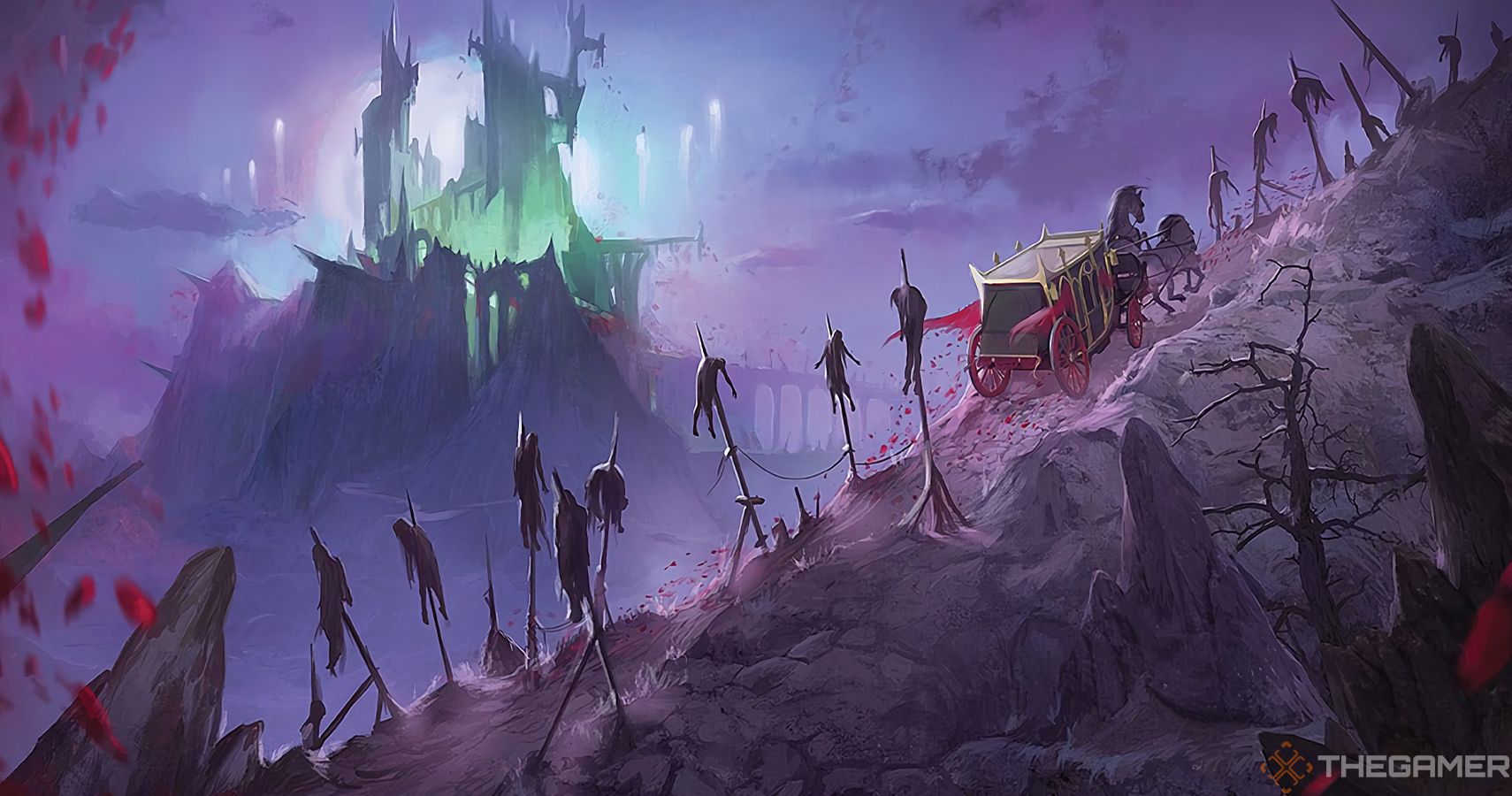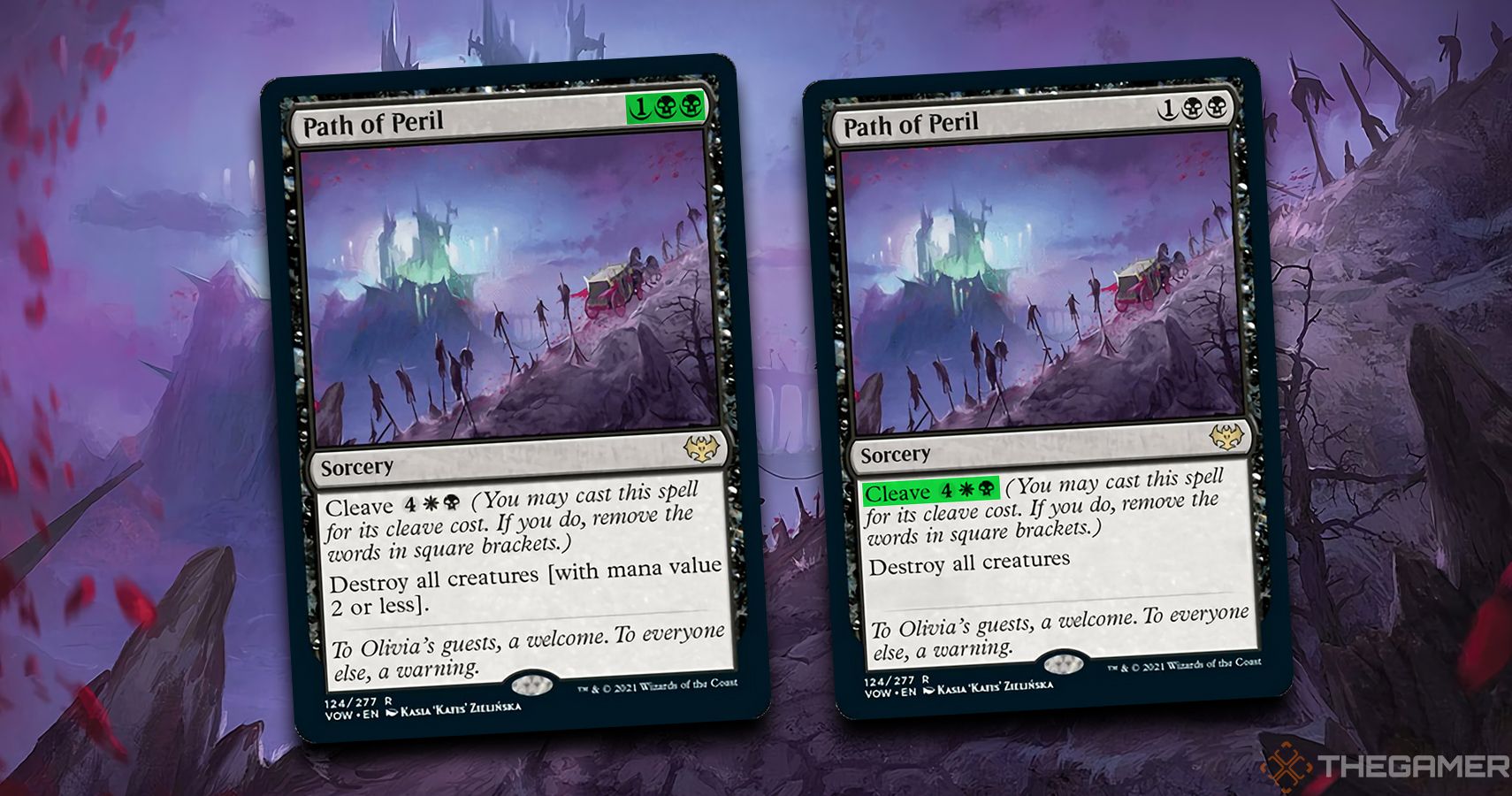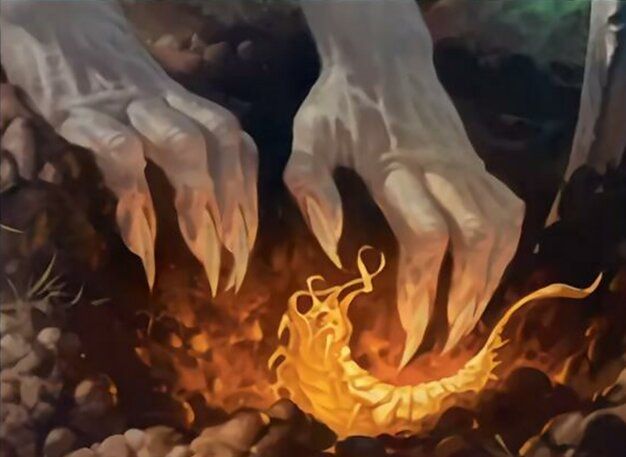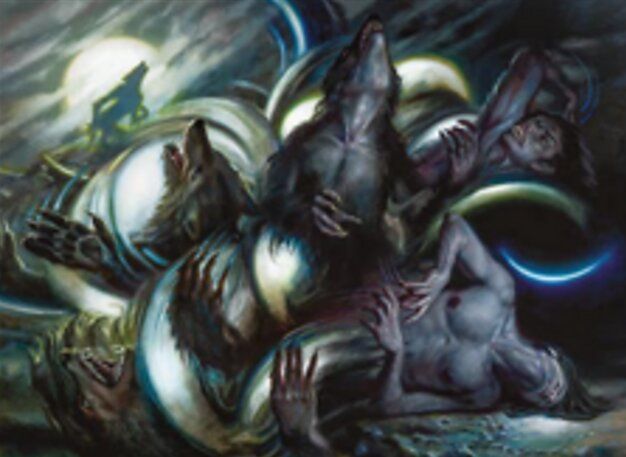In Magic the Gathering's Innistrad: Crimson Vow, we get an up close look at the numerous vampire families that call the plane home. The Voldarens, Stromkirks, Markovs, Falkenraths, Maurers and more all command the respect of Innistrad through a combination of the decadent luxury of their vast wealth, and the horrific brutality of their monstrous natures.
While we don't know for sure where Crimson Vow's new Cleave mechanic fits in story-wise just yet, it feels apt that a set focused on the vampiric aristocracy would let you pay your way into ignoring rules. Here's everything you need to know about Cleave.
What Is Cleave?
Cleave is an alternative casting cost found on some instants and sorceries.
Any instant or sorcery with Cleave will look slightly different to other cards, in that some words may be placed within [square brackets]. By paying the Cleave cost, you're allowed to simply ignore any words in the brackets and pretend they're not there.
For example, Dig Up costs one green mana to cost normally, and allows you to search your library for a basic land, reveal it, put it into your hand, and then shuffle your library. However, if you instead pay the Cleave cost of one generic, two black, and one green, you can cut out the words "basic land" and "reveal it", meaning you can just search for any card, put it into your hand, and shuffle.
Since its announcement, many people have questioned how Cleave is any different from Kicker, a mechanic that lets you pay to modify what a card does. The most significant difference is that Kicker is an additional cost, while Cleave is an alternative one, like Mutate: if you Cleave Dig Up, you only pay the one generic, two black, and one green, and not the one green in the usual casting cost.
The other difference is that Cleave is only found on Instants and Sorceries, and not on any other type of card. You do find permanents with Kicker, whereas keeping track of which permanent has been Cleaved and which hasn't would be a total nightmare.
As an alternative casting cost, it's important to mention that there are times where you'll be unable to Cleave the card. For example, if you cascade into a Path of Peril, you won't be able to pay the cost of four generic, one white, and one black to Cleave it and destroy all creatures. You'll only be able to cast it as its much less useful one generic and two black uncleaved version, which destroys all creatures with mana value two or less.
How To Use Cleave
From the Cleave cards we've seen at the moment, it seems like it's best going to work in formats like Limited or Pauper, where having that flexibility justifies the slightly higher mana costs that normal.
Even then, there are Cleave cards that do more or less the same thing as others for the same price, making them worthwhile inclusions. For example, Lunar Rejection fills a very similar role as Into the Roil (albeit only on creatures), but has the added benefit of being even cheaper when used against wolves or werewolves, which are very popular in the current Standard.
We'll likely see more Cleave as the Innistrad: Crimson Vow previews continue, and with them new ways to put them to good use.
What Colour Is Cleave?
Unlike the set's other new mechanics, Blood and Training, Cleave is found in all five colours. However, it is most common in the Esper colours of white, blue, and black.
There are 12 cards that have Cleave. Green and red have the fewest with one each, then white with two, black with three, and Blue has the most, with five.
One thing that is noteworthy is that there seems to be a theme of Cleave costs requiring more than one colour. Dig Up needs you to have access to both Golgari colours (black and green), while Path of Peril is Orzhov (white and black). This means you won't be able to run either card in a mono-green or mono-black Commander deck respectively, as they would break the format's colour identity rules.




